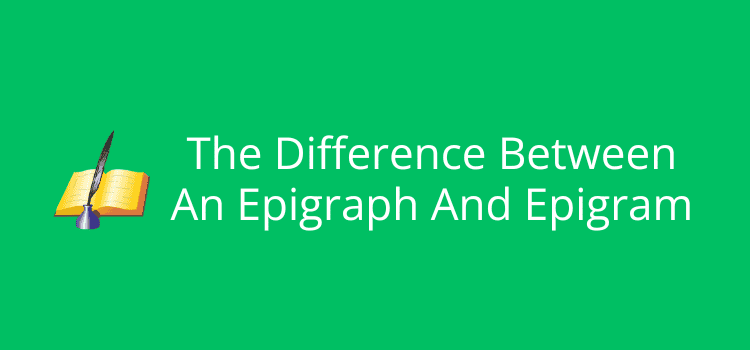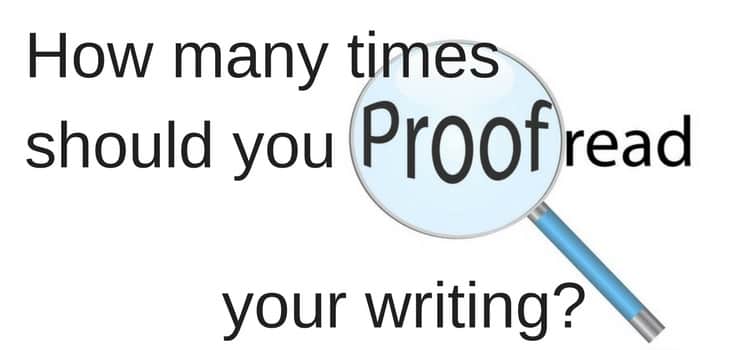
While the words may sound almost the same, an epigraph and epigram are different.
They usually appear at the beginning of a book or novel, similar to a dedication page.
An epigraph is a short text to set the theme or mood, but an epigram is often a satirical or clever remark.
They are not essential. However, both offer authors an opportunity to engage with potential readers who may scan the first pages of a book.
The difference between an epigraph and epigram
You can include an epigraph at the beginning of your book, or even before chapters.
It can help you set the scene, introduce a theme, or offer hints about what is to come in your story.
Sometimes it can be a short poem, a few sentences, perhaps a religious reference, or a famous quotation.
The main objective is to give your reader a quick taste of what your story contains.
An epigram, on the other hand, is not necessarily connected to the story.
It is often a surprise element that can be humorous, witty, or even provocative.
They can sometimes be ironic or satirical.
While you find epigrams in books, you also often see them introducing poetry or essays.
The one big difference is that an epigraph is part of a longer work, such as a novel, whereas an epigram can stand on its own.
So yes, while they are similar, each one has its place.
Examples in literature
Before the first line of the story or narrative begins, many famous authors used epigraphs to introduce a meaning, mood, or theme for their stories. Here are a few.
Frankenstein by Mary Shelley begins with this quote from Paradise Lost.
“Did I request thee, Maker, from my clay To mould me Man?”
IT by Stephen King.
“We lie best when we lie to ourselves.”
The Handmaid’s Tale by Margaret Atwood.
“And when Rachel saw that she bare Jacob no children, Rachel envied her sister; and said unto Jacob, Give me children, or else I die.” — Genesis 30:1
Epigrams, however, are often brief, clever statements that you find within the body of a work or as standalone quotations.
Here are some quick examples.
Oscar Wilde
“I can resist everything except temptation.”
“Always forgive your enemies; nothing annoys them so much.”
George Bernard Shaw
“Youth is wasted on the young.”
Tips for using epigraphs or epigrams in your writing
You can certainly craft and use your own epigraphs and epigrams to add color and depth to your writing.
However, you need to use them thoughtfully, and not as a quick add-on.
Here are some quick tips to help you.
1. Use for a purpose: Your epigraph should introduce a theme or mood. Select a quote or write something that clearly sets the tone for readers.
2. Make epigraphs short and relevant: A brief, meaningful quote is best for helping to create curiosity.
3. Add epigrams for wit or insight: A well-written epigram can reveal character personality, inject humor, or make a notable point.
4. Avoid overusing both: Too many epigraphs or epigrams can become repetitive or even redundant. One or two is usually plenty.
5. Always attribute correctly: If you use quotations, always credit the source or author.
6. Consider your readers: Some epigraphs may work for certain readers but confuse others. Select quotes that readers will understand and appreciate.
7. Placement: While epigraphs typically appear at the beginning of a story, epigrams can be used within the text for a dynamic effect.
8. Tone and style: If you choose to use quotes, they should be in sync with your writing voice and genre.
9. Use epigrams to challenge or surprise: A clever epigram can make readers think differently or question assumptions.
10. Enjoy the challenge: Epigraphs and epigrams are opportunities to play with language and add unique touches to your writing.
These are minor additions to any writing work, but they do need careful consideration and, above all else, used sparingly.
Conclusion
An epigraph is most commonly included on its own page before the story begins, and after all the other front parts of a book.
An epigram can also appear on a front matter page, but can also be used before the start of a chapter.
While the distinction is a minor point, it’s still worth understanding the differences so you can use them correctly.
If you want to use either of them, make sure they are memorable and a positive addition to your book and story.
Related Reading: How To Write A Disclaimer For A Self-Published Book
Share This Article


